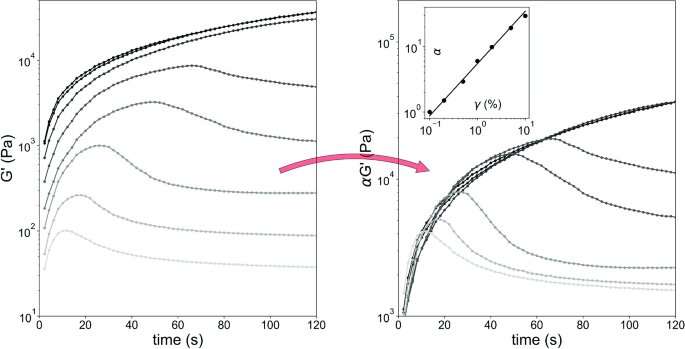This article has been reviewed according to Science X's editorial process and policies. Editors have highlighted the following attributes while ensuring the content's credibility:
fact-checked
peer-reviewed publication
trusted source
proofread
Scientists explore the elasticity of colloidal suspensions

Experiments reveal that under the right conditions, the elasticity of colloidal suspensions will peak at a certain value, which depends both on the deformation applied to the material and the strength of attraction between its solid particles.
The behaviors of colloidal materials—where tiny solid particles are suspended in fluid—depend strongly on how the particles interact with each other. Through new research published in The European Physical Journal E, a team led by Pascal Hébraud at the University of Strasbourg, France, show how under certain conditions, the elasticity of silica-based colloids subjected to oscillating flows will peak at a certain value.
Their discovery could lead to improved techniques for manipulating the behavior of colloidal materials, used in fields as wide-ranging as materials science, food technology, construction, and nanotechnology.
When suspended colloid particles are packed to just the right density, they can form into networks of touching particles, which convey forces throughout the material. As the material flows, more and more particles will aggregate into these networks, putting them under increasing stress.
Eventually, this can cause particles to rearrange themselves into new networks, whose final structures result from a competition between attractive forces between particles, and the forces breaking them apart. When colloidal suspensions flow continuously, these networks are constantly breaking up and rearranging—but this can change when small oscillations are introduced to the flow.
Through a series of experiments, Hébraud's team introduced mildly oscillating flows to a suspension of silica particles in a salt solution. They discovered that the competition between particle attraction and breakup caused the material's elasticity to change over time, but also to peak at a certain value. The position of this peak depended both on the deformation applied to the material and the attraction between the silica particles—which the team altered by varying the solution's salinity. Hébraud and colleagues will now aim to develop new mathematical laws to describe their observations.
If achieved, this could ultimately help researchers to push the capabilities of colloidal suspensions even further.
More information: Maxime Liard et al, Aggregation kinetics of a concentrated colloidal suspension under oscillatory flow, The European Physical Journal E (2023). DOI: 10.1140/epje/s10189-023-00294-7
Journal information: European Physical Journal E
Provided by Springer




















